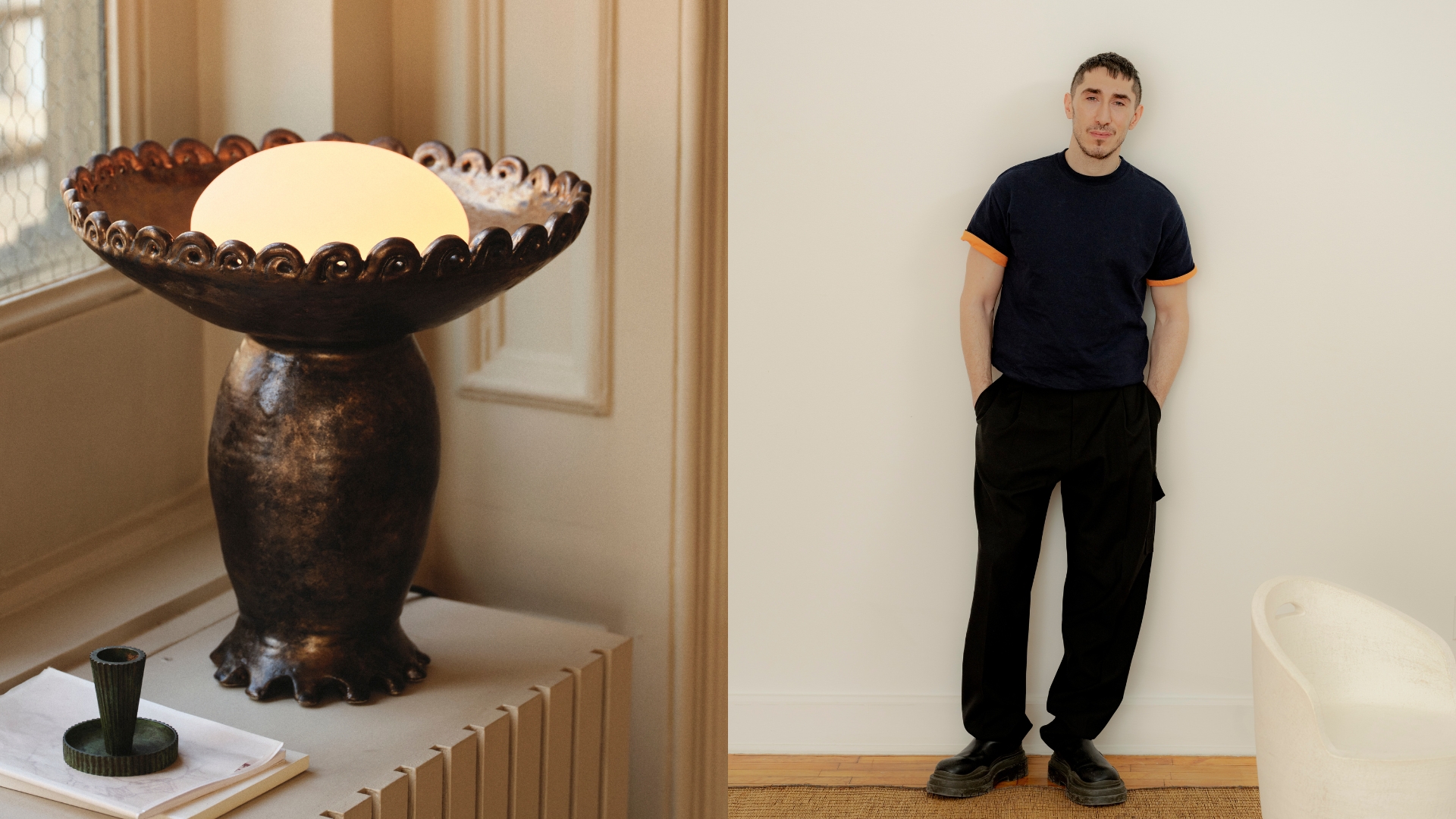
This month we are taking a moment to recognize the innovation brought about by contemporary craftsmen and makers. Navigating an industry that prioritizes profit over quality, where cookie-cutter items are mass-produced at the expense of finish, originality, and the planet, artisans embody the emotional connection, human creativity, and resourcefulness necessary to deal with the challenges of the today.
Despite its contemporary look, the organically-shaped, textural creations of New York City furniture maker and ceramist Danny Kaplan feel a-temporal, as if cast into the now from a distant era. Floating between the present and echoes of the past, they reinvigorate the legacy of a medium that has evolved in tandem with humanity from the very beginning. The art of ceramics has always served two diametrically opposite purposes: in its most material form, it has allowed humans to store and preserve essential goods like food and beverages; at its most symbolic, it has acted as a vehicle for spiritual, artistic, and cultural knowledge.
It was this synthesis of practicality and creative expression that, together with its inherently tactile nature, drew Kaplan closer to the ancient artform: to him, "the process of hand-throwing and sculpting clay felt liberating and fulfilling," he tells me. And that is because, unlike painting or fine art, both of which "are open for interpretation", ceramics culminates in an objective accomplishment. "If I set out to make a bowl which actually functions as one, then I have succeeded in my pursuit," Kaplan says. "It was only after mastering the handcraft that I could hone in on defining my aesthetic."
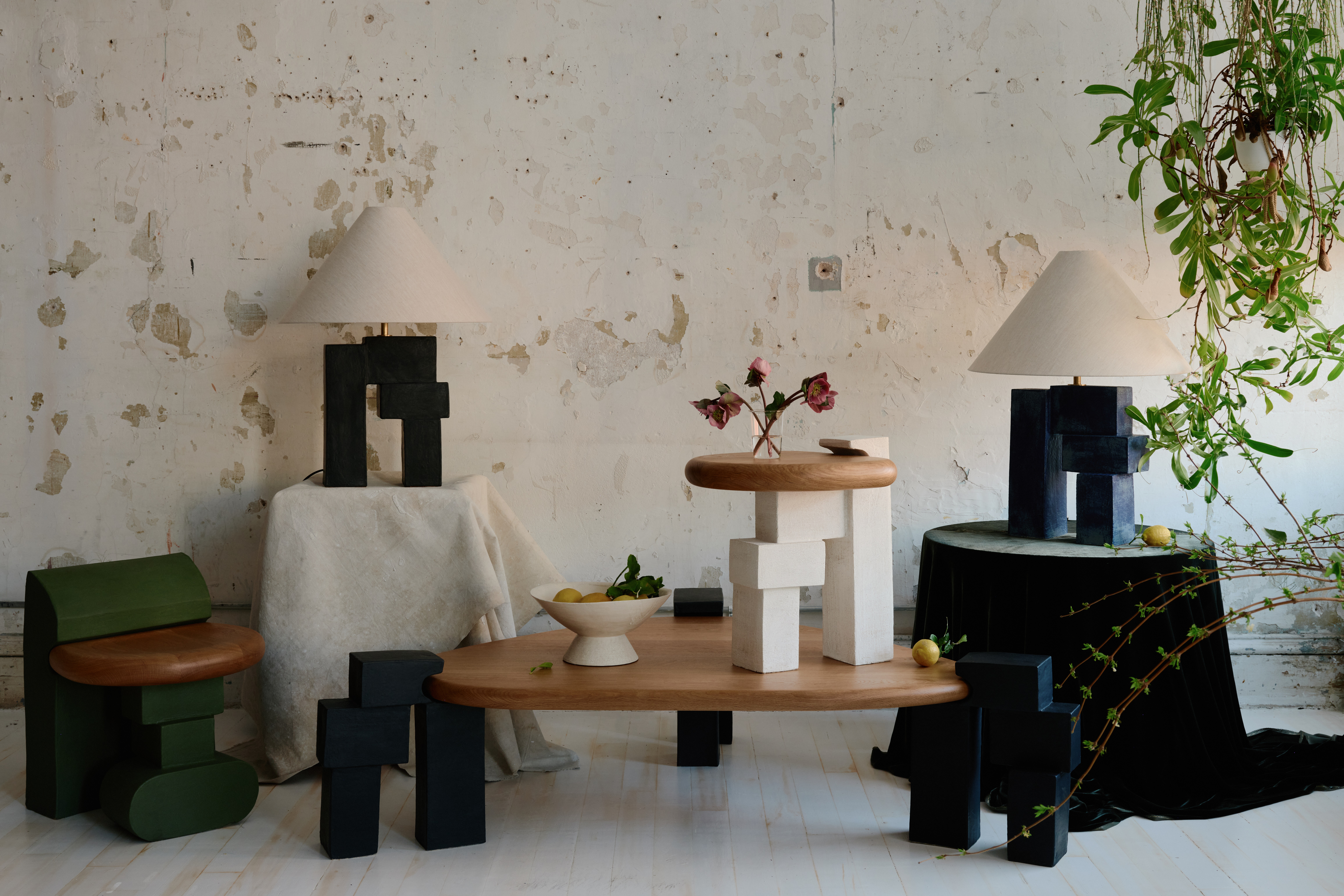
His first encounter with pottery came at a young age. Raised in Aix-en-Provence, the designer recalls how southern France's "traditional approach to ceramics and vibrant glazes left a lasting impression on me", he says. Kaplan quietly cherished that fascination for years to come: after returning to New York in 2001, he cut his artistic teeth working as a prop stylist and set designer — two occupations that, the ceramist explains, allowed him to develop his "eye for composition and detail". With a Bachelor's of Arts in Creative Writing, Art History, and Fine Arts from the New School, today he incorporates seemingly un-pairable influences into ingeniously assembled tables, lamps, chairs, and vases that are a "labor of love".
From the modernist ceramics of German-born, British studio potter Hans Coper and the lavish minimalism of legendary French interior designer Jean-Michel Frank to the ever-influential, primitive forms of ancient Greek, Mayan, and Chinese pottery, "I have a profound appreciation for meticulous craftsmanship, the beauty found in simplicity, and a steadfast commitment to creating original work," Kaplan explains.
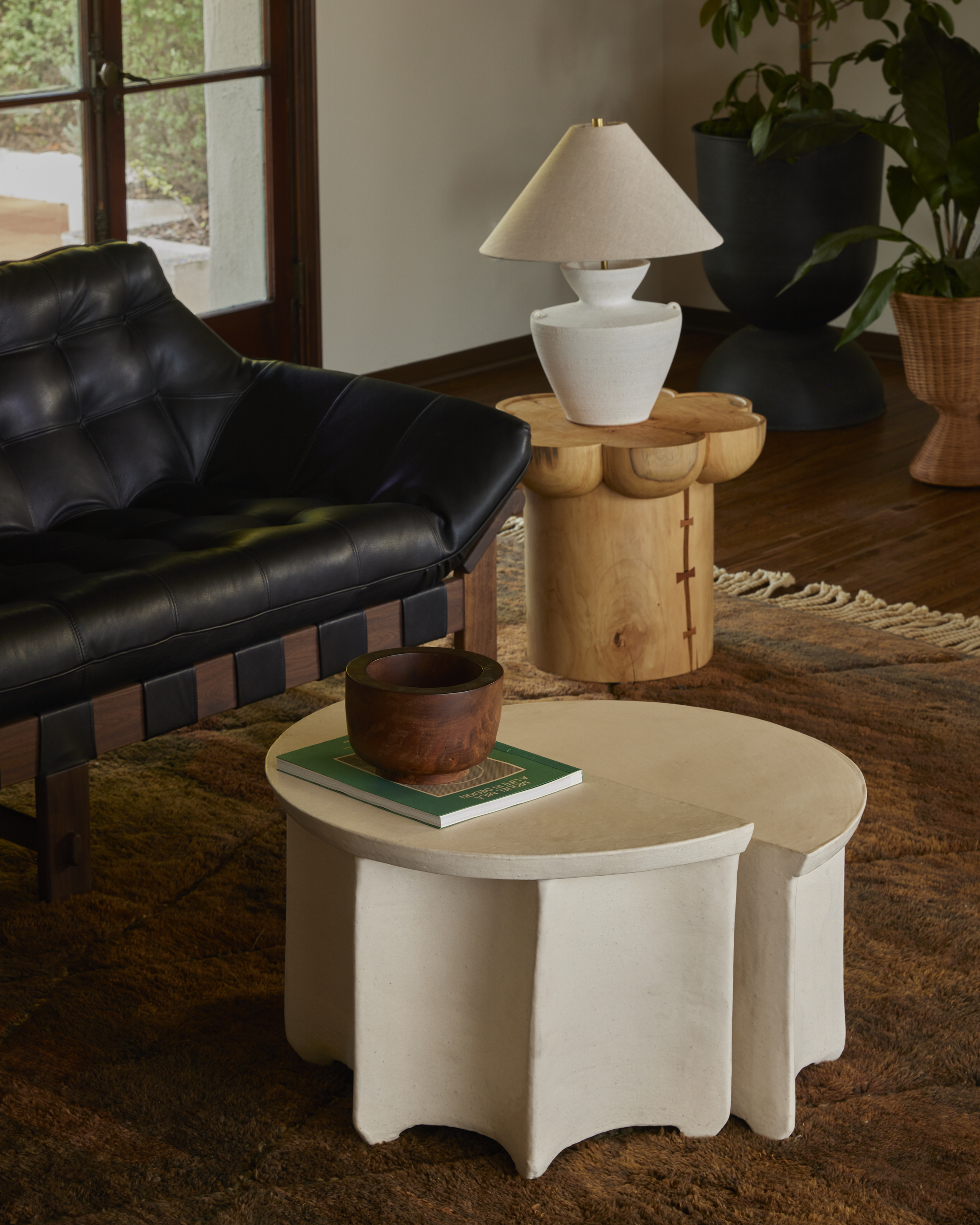
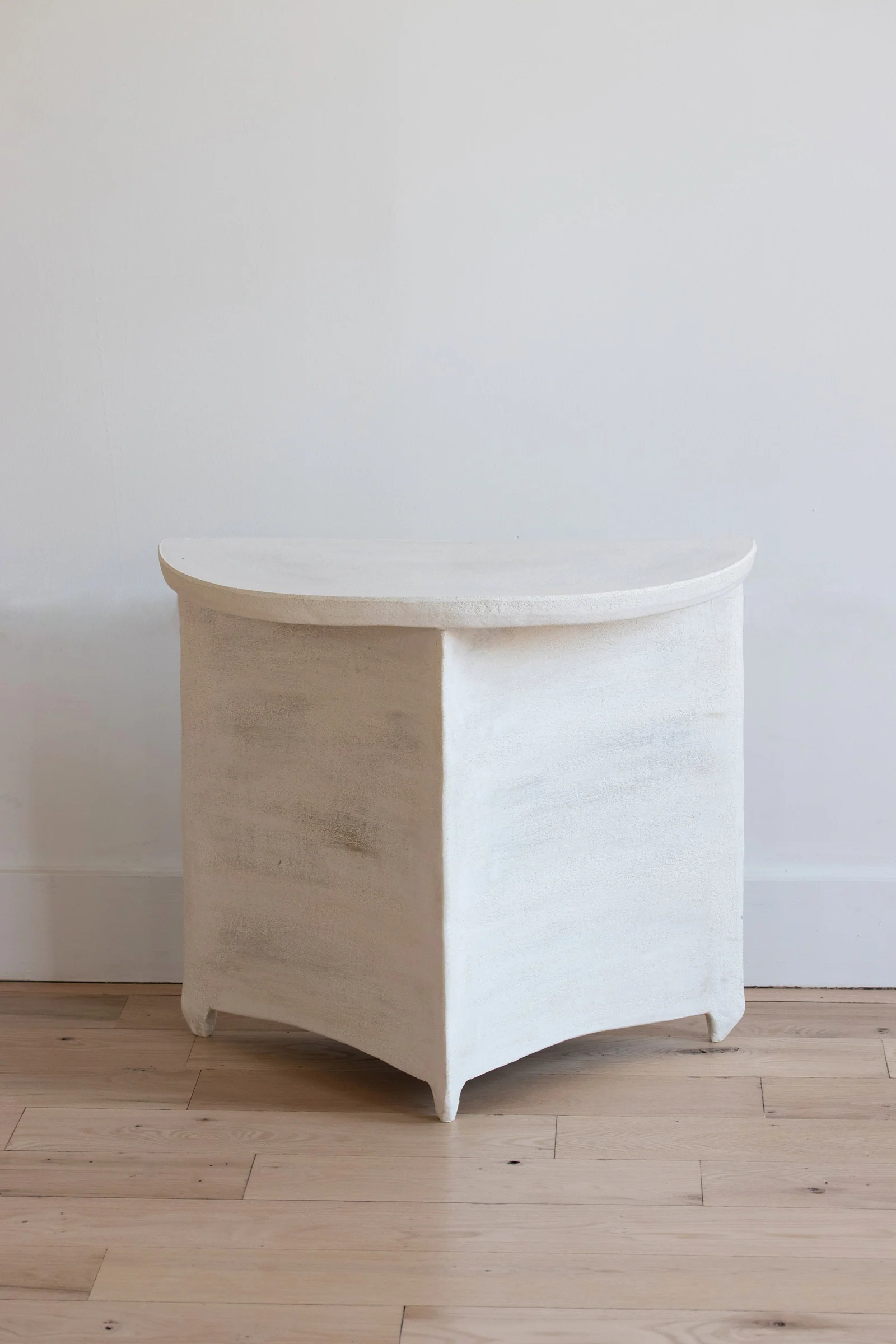
Material: Body: Glazed Ceramic. Finish: Stone.
Price: From $4,500
Heralded by a course he took at Manhattan's La Mano Pottery in 2015, Danny Kaplan's eponymous studio operates with a tight-knit team of artisans who — together with the ceramist — translate his craft into evocative designs. Situated in a pre-war, former bottling factory on 40 Park Street in Brooklyn, New York, the atelier uses a series of manual ceramics techniques, from wheel-throwing, coil- and slab-building, to kiln firing and glazing. Having first tried his hand at tableware, "my practice quickly expanded to include large-scale vessels, table lamps, and sculptural furniture," Kaplan says.
Through his continuous clay experimentation, he has unlocked new ways to "merge form and function": its wall, table, and floor lighting offerings, for example, boast graceful "zigzag" and curvilinear motifs reminiscent of primitive art. Still, with their ornament-free, color-block organic surfaces and the warmth emanating from their cream shades, they would also make a valuable addition to a mid-century modern living room. Clearly informed by the Mediterranean amphora tradition, Kaplan's vessels and tabletops, too, owe as much to Greece's archaic culture as they do to Brutalist architecture's post-war abstraction. Yet, his production isn't fueled by nostalgia, but thrives off a desire to push traditional ceramics forward.
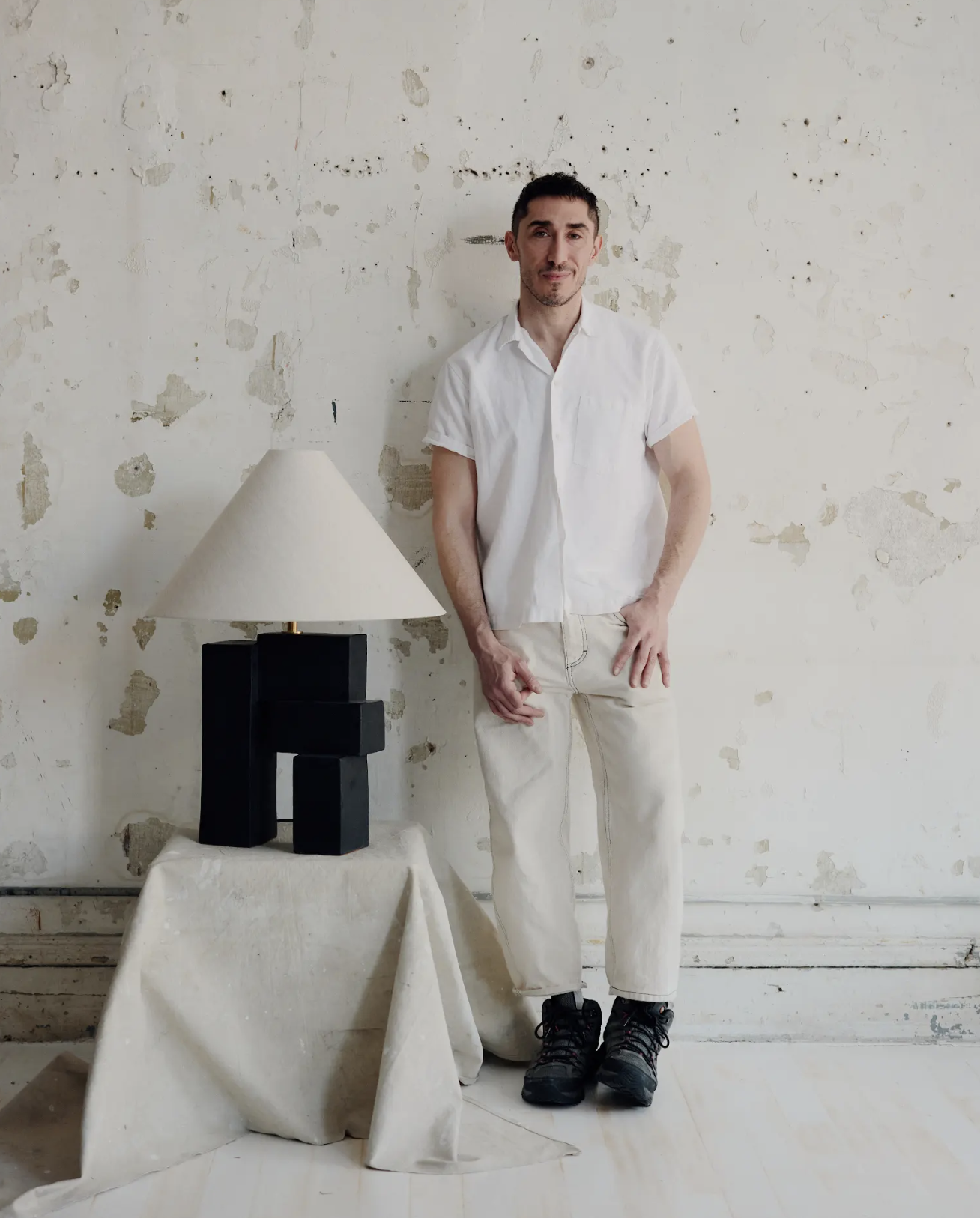

It is a mission the self-taught artist is wholeheartedly committed to, one Kaplan cultivates by testing out different approaches and finishes in his ceramic work. But as Livingetc's contributing editor Keith Flanagan promptly reported last month, the designer is also breaking new ground with mediums other than clay, as exemplifies his latest collection, Delf. Made in partnership with Vince Patti of design studio Lesser Miracle, this four-piece furniture series skillfully fuses the timeless ceramic forms and tactile glazes Kaplan is praised for with the fellow artist-cum-designer's expressive woodworking expertise. Released in May 2024, "the collection marks the second time our studio has integrated wood into its designs," Kaplan says of the drop, which merges his and Patti's interest in Art Deco design and the post-modern work of visionary architect Tobia Scarpa.
"Each piece is created using the slab-building technique, allowing for unique rectilinear shapes that are not possible with a potter's wheel," he continues. As such, "Delf showcases a new design language for the studio, blending structural innovation with our signature aesthetic." For Kaplan, collaborations are a cornerstone of the atelier, and one of the core values of his practice more widely. "Engaging in conversation with other makers enriches the creative process, as sharing knowledge inspires innovation and fosters community," the ceramist says. Together with respect for the material, its unique properties, and potential, and a thorough understanding of the narratives and traditions that have shaped its history, "this principle nurtures a profound relationship between craftsmen, the mediums we use, and the broader artistic scene".

His Terra Series is another project that stemmed from an intertwining of perspectives. Co-authored by Kaplan and In Common With, and standing out for the minerals-inspired hues of its finishes, the collection represents "a dialogue between our studios' two focuses". Here, Kaplan's bold glaze choices and In Common With's crafty brass hardware collide into "a true representation of my vision for utilitarian beauty", the designer says. This pared-back notion of beauty was handed down to him by French furniture designer Jean-Michel Frank, whose ability to create strikingly simple yet elegant designs resonate deeply with Kaplan's approach to ceramics.
Just like Frank's, the ceramist's aesthetic seeks to evoke a sense of "understated luxury and tactile pleasure". Highlighting natural materials and textures over embellishments, Kaplan makes the authenticity of his chosen mediums — and the unmistakable imprint left by his touch — manifest in his craftwork. "Handmade pieces offer a sense of individuality, carrying the artisan's story and soul," he says. The designer is confident that supporting craftsmen helps encourage a more meaningful approach to consumption. "Artisanry fosters sustainable practices, emphasizing quality and longevity over disposability," Kaplan explains. He believes that, much like in his practice, the solution to today's throw-away society can come from the cross-pollination of creative ideas. "I would like to see more collaborations between artisans and designers from different disciplines," Kaplan says of his hopes for the future. After all, if anyone can promote the value of well-made, durable pieces, it is contemporary makers.







